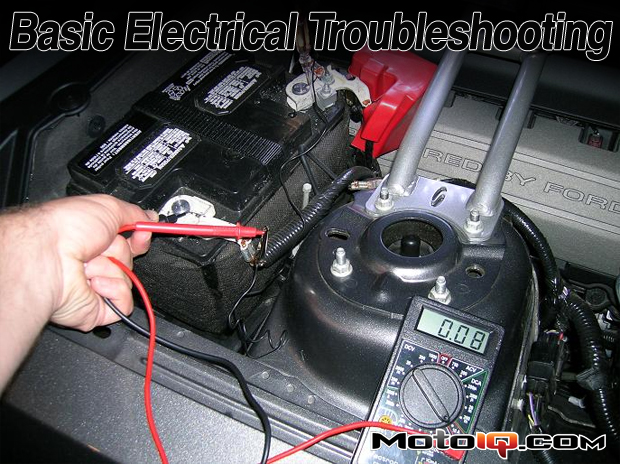,
The Digital Multimeter
The digital multimeter, or DMM, is a very useful piece of equipment. The DMM can be used to measure voltage, current, and resistance. Some higher-end multimeters also let you measure parameter values of transistors and diodes, but that’s mostly unnecessary for working on cars.
 |
| The DMM should be in every gearhead’s toolbox. |
The DMM has two probes that are usually sharp. (Some DMMs have alligator clips instead of or in addition to these sharp probes.) The sharp probes can be used to pierce wire insulation to make measuring circuits easier. For most automotive purposes, a DMM will be used to measure one of three things: voltage, current, or resistance.
Voltage is the easiest to measure with a DMM and probably the most common. A DMM being used to measure voltage can also be called a voltmeter. Remember that voltage is across an object, so we need to measure it across the object, as well. Set the dial on your DMM to the “DCV” or “DC Voltage” region. The different numbers on the dial are different magnitudes of measurement. Since cars operate at around 12 volts, set the DMM to “20.”

The probes need to touch the hot wire before the device and either the chassis or the ground wire after the device.
 |
| Here, I am measuring the voltage across the battery terminals. |
Current runs through an object, so it is a little harder to measure. The first thing that you have to do on (most) DMMs is change the port that the positive probe is plugged into. This is important, as using the wrong port for measuring current could damage your DMM or your car’s electrical system. Set the dial to the highest setting, because automotive electrical systems are low-voltage and thus (relatively) high-current.
 |
| This DMM is set to be an ammeter. Note that the plug is moved into the “10ADC” port and the dial is set to 10 amps. |



